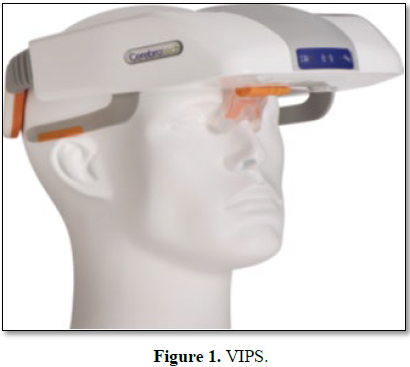753
Views & Citations10
Likes & Shares
Early and accurate
detection is the most critical part in surviving a stroke as it is one of the
fastest and lethal neurological events. Within the first 24 h of onset of
stroke, the Emergent large-vessel occlusion (ELVO) has to be treated with Endovascular
treatment (EVT). VIPS is a non-invasive technology which works on the principle
of Bio impedance. It distinguishes the miniscule dissimilarities in the brain;
electrical properties in relation with volume changes in the brain. ELVO
affects the cerebral hemispheres unequally such variations results in asymmetry
of tissue bio impedance pattern which will be recorded by VIPS.
Keywords: Bioimpedance, Emergent large-vessel occlusion, Endovascular treatment,
stroke Visor, Volumetric impedance phase shift spectroscopy
INTRODUCTION
Speed saves!
A stroke occurs when
blood flow to an area in brain is shut down, resulting in a deficiency of
oxygen to brain tissues, which leads to death of neural tissues along with the
loss of function of that particular area of Brain. Early and accurate detection
is the most critical part in surviving a stroke as it is one of the fastest and
lethal neurological events. Within the first 24 h of onset of stroke, the
Emergent large-vessel occlusion (ELVO) has to be treated with Endovascular
treatment (EVT).For a delay of every one hour, the probabilities of a positive
outcome comes down to about 20%. The speed in responding to a stroke is very
critical. It takes hours to transport a patient in Ambulance to a hospital
which will be followed by the routine protocol such as physical examination and
imaging studies. This increases the jeopardy of grave brain injury. Tactlessly,
there is no precise, early-stroke detection device in the ambulance or
emergency room to shift the patient directly to stroke treatment centres for instantaneous
surgical intervention.
VIPS: VOLUMETRIC
IMPEDANCE PHASE SHIFT SPECTROSCOPY
VIPS is a non-invasive technology which works on the principle of
Bioimpedance. It distinguishes the miniscule dissimilarities in the brain's
electrical properties in relation with volume changes in the brain (Figure
1).
Mechanism of action of VIPS
During an episode of stroke, cerebral volume
changes. The VIPS device, acknowledged as the Cerebrotech Visor System, is
positioned on the patient’s head. It transmits low-frequency radio waves from
the sides of back of the head to a receiver connected to the visor in the
forehead region. This device records the Alterations in the patterns of tissue
bioimpedance that occurs as a result of fluid and electrolyte changes while the
low frequency radio waves pass through cerebral fluids. The patient might be
having a severe stroke, if the device projects even a minute asymmetry in
bioimpedance pattern.
ELVO
and VIPS
The Emergent large-vessel occlusion (ELVO) produces an ischemic zone in
the brain where the arterial blood content is reduced along with the alteration
in fluid and electrolyte distribution across the intracellular, extracellular
as well as intravascular spaces. As ELVO affects the cerebral hemispheres
unequally such variations results in asymmetry of tissue bioimpedance pattern
which will be recorded by VIPS.
Features
of VIPS
1.
The device is
simple.
2.
Easy to use.
3.
Minimal
training is required.
4.
Reduces the
time gap between diagnosis and treatment of stroke.
5.
It produces a
large amount of bioimpedance data across a wide array of frequencies.
6.
Apart from
stroke, its machine learning is used to detect explicit brain pathologies like
hydrocephalus, development of cerebral edema, traumatic brain injury [1].
1.
Kellner CP, Sauvageau E, Snyder KV, Fargen KM,
Arthur AS, et al. (2018) The VITAL study and overall pooled analysis with the
VIPS non-invasive stroke detection device. J NeuroIntervent Surg 10: 1079-1084.
QUICK LINKS
- SUBMIT MANUSCRIPT
- RECOMMEND THE JOURNAL
-
SUBSCRIBE FOR ALERTS
RELATED JOURNALS
- BioMed Research Journal (ISSN:2578-8892)
- International Journal of Internal Medicine and Geriatrics (ISSN: 2689-7687)
- International Journal of Radiography Imaging & Radiation Therapy (ISSN:2642-0392)
- Advance Research on Alzheimers and Parkinsons Disease
- Journal of Blood Transfusions and Diseases (ISSN:2641-4023)
- Journal of Otolaryngology and Neurotology Research(ISSN:2641-6956)
- Journal of Pathology and Toxicology Research


